UPSC Daily Current Affairs: 29 August 2024 | Current Affairs & Hindu Analysis: Daily, Weekly & Monthly PDF Download
GS2/Polity
Bureau of Police Research and Development (BPR&D)
Source: PIB
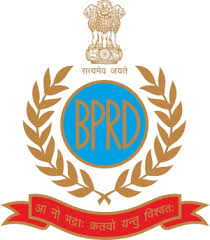
Why in news?
The Bureau of Police Research and Development (BPR&D) recently celebrated its 54th Foundation Day at its headquarters in New Delhi.
About Bureau of Police Research and Development (BPR&D):
- BPR&D was established in 1970 under the Union Ministry of Home Affairs, succeeding the Police Research and Advisory Council.
- Headquarters: New Delhi
- The bureau was created to:
- Identify the needs and challenges faced by police forces across the country.
- Conduct research initiatives and studies aimed at addressing police issues and fulfilling their requirements.
- Stay updated with advancements in science and technology, both domestically and internationally, to enhance police operations through appropriate technology.
- Over time, BPR&D has taken on additional responsibilities, including:
- Monitoring training needs and the quality of training provided in State and Central Police Organizations.
- Providing support to states for the modernization of State Police Forces and Correctional Administration.
- Assisting the Ministry of Home Affairs and Central Police Forces in developing standards and quality requirements for various police-related equipment and infrastructure.
- Recently, BPR&D has also been tasked with leading and coordinating the National Police Mission.
- The Bureau was initially set up with two divisions:
- Research, Statistics & Publication
- Development
- Following the Gore Committee's recommendations, a Training Division was established in 1973.
- BPR&D operates five Central Detective Training Institutes located in:
- Kolkata
- Hyderabad
- Chandigarh
- Ghaziabad
- Jaipur
- These institutes are dedicated to training police officers and relevant stakeholders.
GS2/Governance
ANUBHAV Awards
Source: PIB

Why in News?
Recently, the Department of Pension and Pensioners’ Welfare (DoPPW) organised the 7th Anubhav Awards ceremony to acknowledge the contributions made by Central Government employees during their service.
About ANUBHAV Awards:
- The ANUBHAV Awards celebrate the contributions of retired officials in building the nation and preserving India's administrative history through written accounts.
- The ANUBHAV Portal, launched in March 2015, offers a digital space for retiring and retired government workers to exchange their experiences.
- This initiative was started by the Department of Pension & Pensioners' Welfare under the Union Ministry of Personnel, Public Grievances & Pensions.
Objectives
- To develop a database containing significant suggestions and work experiences from retired employees.
- To leverage the human resources of retiring employees for the purpose of nation-building.
- To assist Ministries and Departments in making informed decisions based on useful and replicable suggestions.
Eligibility:
- Retiring Central Government employees or pensioners must submit their Anubhav write-ups 8 months prior to retirement and up to 1 year following their retirement.
- These write-ups will be evaluated by the concerned Ministries/Departments before publication.
- Published write-ups will be considered for the Anubhav Awards and Jury Certificates.
- Each awardee will receive a medal, a certificate, and a cash prize of 10,000 rupees, while Jury Certificate winners will receive a medal and a certificate.
GS3/Defence & Security
What is a SIG 716 Rifle?
Source: The Print
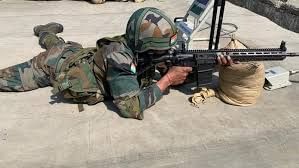
Why in News?
The Union Ministry of Defence recently placed a repeat order for 73,000 SIG716 rifles from Sig Sauer, a U.S. firearms manufacturer, with deliveries anticipated to be finalized by the end of 2025.
About SIG 716 Rifle:
- The SIG 716 is an automatic assault rifle produced by Sig Sauer, an American firearms company.
- The Indian Army has integrated this rifle extensively, particularly for use by troops stationed in mountainous terrains and sensitive border areas.
Features
- Overall length: 34.39 inches
- Barrel length: 15.98 inches
- Total weight: 3.58 kg
- High recoil and caliber designed for precision shooting at distances of up to 600 meters.
- Equipped with a powerful 7.62x51mm caliber, providing a longer range and increased lethality compared to the current INSAS and AK-47 rifles in service.
- The gas piston system improves the rifle's reliability and minimizes maintenance requirements.
- The modular design allows the SIG 716 to be easily modified for various operational roles by adding accessories on its Picatinny rail, making it highly versatile for military and tactical units.
GS3/Science and Technology
What are Deepfakes?
Source: The Hindu
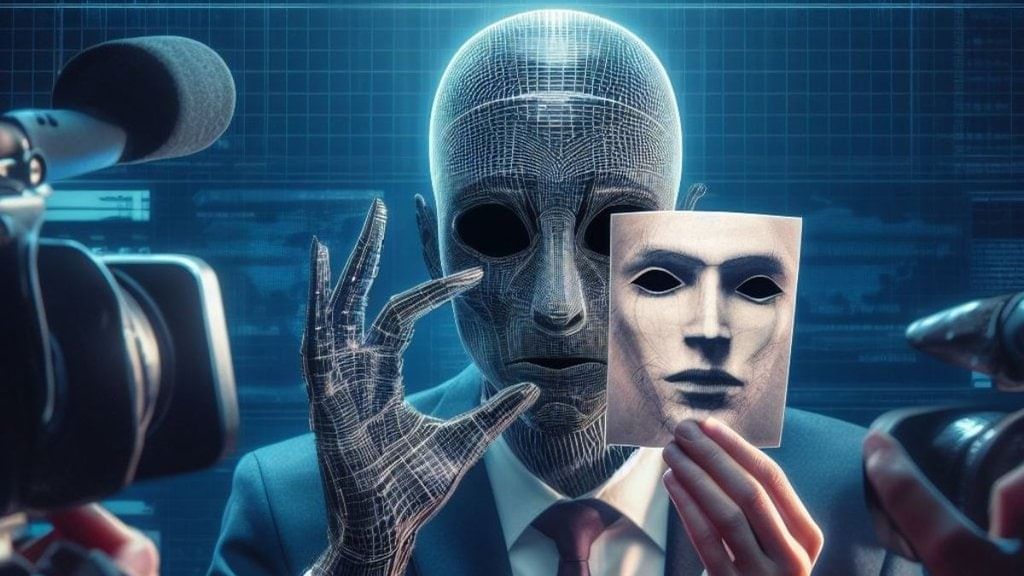 Why in News?
Why in News?
South Korea’s president recently ordered a crackdown on an epidemic of digital sex crimes targeting women and girls who become the unwitting victims of deepfake pornography.
About Deepfakes:
- Deepfakes refer to synthetic media forms, encompassing images, videos, and audio that are generated by Artificial Intelligence (AI) technology.
- These media representations depict scenarios or individuals that do not exist in reality or illustrate events that have never taken place.
- The term "deepfake" is derived from "deep," which refers to deep-learning technology (a subset of machine learning that processes information through multiple layers), and "fake," indicating that the produced content is not authentic.
- Deepfake technology can produce entirely fictional characters and can also manipulate real individuals to appear as if they are saying or doing things contrary to their actual behavior.
Background:
- The origin of the term "deepfake" dates back to 2017 when a Reddit user named "deepfakes" began sharing explicit videos of celebrities.
Working:
- Deepfakes are generated using machine learning models, which employ neural networks to alter images and videos effectively.
- To create a deepfake video, the creator first trains a neural network using extensive footage of the targeted individual to accurately capture their appearance from various angles and lighting conditions.
- After training, the creator combines the neural network with computer graphics techniques to overlay the likeness of the individual onto a different actor.
Implications:
- Deepfake technology is increasingly exploited for malicious activities such as scams, hoaxes, and unauthorized celebrity pornography.
- It poses risks in areas such as election manipulation, social engineering, automated disinformation campaigns, identity theft, and financial fraud.
- One of the challenging aspects of deepfakes is that they are often hard to detect, making it difficult to distinguish them from genuine content.
GS2/International Relations
What is the Pacific Islands Forum (PIF)?
Source: Indian Express

Why in News?
The annual meeting of the Pacific Islands Forum has commenced in Nuku’alofa, the capital of Tonga.
About Pacific Islands Forum (PIF):
- Establishment: Founded in 1971.
- Members: Comprises 18 member states including Australia, Cook Islands, Federated States of Micronesia, Fiji, French Polynesia, Kiribati, Nauru, New Caledonia, New Zealand, Niue, Palau, Papua New Guinea, Republic of Marshall Islands, Samoa, Solomon Islands, Tonga, Tuvalu, and Vanuatu.
- Vision: Aims to foster peace, harmony, security, social inclusion, and prosperity in the Pacific region.
- Framework: Operates under the Framework for Pacific Regionalism, which outlines strategic visions and objectives.
- Dialogue Partners: Engages with 18 dialogue partners, including major nations such as the USA, China, India, and members of the EU.
- Key Focus Areas: Concentrates on environmental sustainability, economic growth, cultural development, and regional security.
- Leadership: Led by a Secretary-General, with annual meetings among the leaders of member countries.
Significance of PIF
- The PIF is a strong advocate for global climate action, providing funding for resilience efforts via the Pacific Resilience Facility (PRF) to assist vulnerable Pacific nations.
- It enhances cooperation among its 18 small island states, promoting collaborative decision-making on significant regional matters.
- The forum bolsters the Pacific’s capacity to address geopolitical tensions arising from interactions between major powers like the US and China.
- PIF encourages sustainable economic development through initiatives focused on regional trade and investment.
- It prioritizes the protection of Pacific ecosystems by tackling issues such as ocean pollution and overfishing.
GS3/Economy
Agriculture Infrastructure Fund (AIF) Scheme
Source: The Hindu

Why in news?
The Central Government has recently broadened the scope of the Agriculture Infrastructure Fund (AIF) scheme to enhance its appeal, aiming to bolster farm-related infrastructure across the country.
About Agriculture Infrastructure Fund (AIF) Scheme:
- This initiative is a Central Sector Scheme launched in 2020.
- Objective: The scheme aims to provide a medium- to long-term debt financing facility for investments in viable projects related to:
- Post-harvest management infrastructure
- Community farming assets
- Financial support will be facilitated through interest subvention.
- The duration of the scheme spans from FY2020 to FY2032 (10 years).
Who is eligible?
- Eligible entities include:
- Primary Agricultural Credit Societies (PACS)
- Marketing Cooperative Societies
- Farmer Producers Organizations (FPOs)
- Farmers
- Self Help Groups (SHGs)
- Joint Liability Groups (JLGs)
- Multipurpose Cooperative Societies
- Agri-entrepreneurs and Startups
- Central/State agencies or Local Body sponsored Public-Private Partnership Projects.
Exclusions:
- Public Sector Undertakings (PSUs) are not directly eligible, but projects they sponsor under PPP arrangements can qualify.
- Various financial institutions like scheduled commercial banks, cooperative banks, Regional Rural Banks (RRBs), Small Finance Banks, Non-Banking Financial Companies (NBFCs), and the National Cooperative Development Corporation (NCDC) can provide this financing facility.
- NABARD may offer need-based refinance support to eligible lending entities.
Features:
- Loans up to ₹2 crores will receive an interest subvention of 3% per annum for a maximum duration of 7 years.
- Applicants can submit proposals for up to 25 projects at different locations, with each project eligible for a loan of up to ₹2 crore.
- The 25 projects limit applies to private sector entities, including farmers, Agri-entrepreneurs, and startups.
- This limit does not apply to state agencies, cooperatives, national and state federations of cooperatives, FPOs, and SHGs.
- Multiple projects at a single location can also be funded, subject to an overall cap of ₹2 crores.
- Borrowers are required to contribute at least 10% of the total project cost, regardless of available capital subsidy.
- The repayment moratorium can vary between a minimum of 6 months and a maximum of 2 years.
- 24% of the total grants must be allocated to SC/ST entrepreneurs (16% for SC and 8% for ST).
- Lending institutions are encouraged to prioritize loans for women and other marginalized groups.
- Credit guarantee coverage is available for eligible borrowers under the Credit Guarantee Fund Trust for Micro and Small Enterprises (CGTMSE) scheme for loans up to ₹2 crores, with the government covering the fee.
- FPOs can access credit guarantees from the facility established under the FPO promotion scheme of the Department of Agriculture, Cooperation & Farmers Welfare (DACFW).
GS2/Governance
Himachal Bill raises women’s marriage age
Source: Indian Express
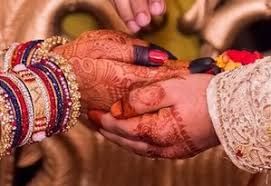
Why in news?
The Himachal Pradesh Assembly has passed the Prohibition of Child Marriage (Himachal Pradesh Amendment) Bill, 2024. This Bill aims to increase the minimum marriage age for women from 18 to 21 years. To accomplish this, the Bill amends the Prohibition of Child Marriage (PCM) Act, which was originally enacted by Parliament in 2006.
Growing demand for raising the minimum marriage age for girls to 21 in India due to various factors:
Gender Equality and Education
- Higher Education: Raising the marriage age provides girls with additional time to finish their education, enhancing their career opportunities.
- Empowerment: Postponing marriage allows women to acquire skills and achieve financial independence.
Health and Well-being
- Maternal Health: Early marriages can lead to early pregnancies, which are linked to increased risks of maternal and infant mortality. Raising the marriage age enables girls to reach physical and emotional maturity, resulting in safer pregnancies and improved health outcomes.
- Child Development: Delaying motherhood allows women to provide better care for their children, as they are more emotionally and financially prepared.
Reducing Child Marriage
- Combatting Child Marriage: Child marriage remains common in certain areas of India, contributing to social issues like domestic violence, educational deprivation, and poverty.
- Economic Development
- Workforce Participation: Postponing marriage can enhance women's involvement in the workforce, fostering economic growth.
- Key challenges
- There is a discrepancy between the age of attaining majority (18 years) and the new marriage age (21 years). This may affect the rights and responsibilities of individuals aged between 18 and 21.
- Inconsistencies with Supreme Court Judgments: In 2018, the Supreme Court stated that the right to marry is part of the right to life under Article 21 of the Constitution and recognized consensual choices under Articles 19 and 21. The current Bill, which prohibits marriage before 21, raises questions about the reasonableness of this restriction for individuals aged 18 to 21.
- Implementation challenges
- Efforts to reduce marriages of girls below 18 have seen limited success; only 785 cases were registered under the 2006 Act in 2020, indicating low detection rates of such marriages. Therefore, it remains uncertain whether raising the minimum age will significantly affect child marriage rates.
- Himachal Pradesh Bill details
- The Bill amends the Prohibition of Child Marriage (PCM) Act, raising the minimum age for both genders to 21 years, removing previous distinctions.
- The Bill defines a "child" as anyone under 21, overriding other laws or cultural practices that allow earlier marriages.
- It extends the timeframe for petitioning to annul a child marriage, allowing individuals to do so within five years after reaching the age of majority, thus until they are 23 years old.
- Legislative Process and Constitutional Implications
- The Himachal Pradesh Bill seeks to amend the Prohibition of Child Marriage (PCM) Act by raising the minimum marriage age for women to 21 years, which contradicts the central law that sets it at 18.
- Marriage laws fall under the Concurrent List, enabling both central and state governments to legislate. However, if a state law contradicts a central law, Article 254(1) renders the conflicting part void unless the President consents under Article 254(2).
- The Bill must be reserved for the President's consideration by the Governor of Himachal Pradesh. The President's assent is essential for the Bill to become law, similar to the procedure for Uttarakhand's Uniform Civil Code (UCC) Bill.
GS3/Health
Sharpening India’s anti-tuberculosis fight
Source: The Hindu

Why in news?
India is at a pivotal point in its battle against tuberculosis (TB) with the introduction of innovative treatments, necessitating a revamp of existing programs to effectively eliminate TB. The current situation presents a mix of advancements and ongoing challenges that need to be addressed.
Current Status of TB in India:
- Incidence Rate: The incidence of TB in India in 2022 was reported at 199 cases per 100,000 individuals, a decrease from 237 cases per 100,000 in 2015, marking a 16% reduction.
- Prevalence: A national survey from 2019 to 2021 estimated that around 31% of individuals over 15 years old are infected with tuberculosis.
- Global Contribution: In 2020, India accounted for approximately 26% of the world's TB cases and 38% of global TB deaths among individuals without HIV.
- Mortality Rate: The mortality rate due to TB decreased from 28 deaths per 100,000 in 2015 to 23 deaths per 100,000 in 2022, indicating progress in disease management.
- Total Cases: Estimates indicate an increase in total TB cases in India from 2.2 million to 2.6 million, highlighting persistent challenges in detection and treatment.
Problems with Previous Treatment Regimens:
- Lengthy and Complex: Traditional TB treatments are long, requiring patients to take between 13 to 14 tablets daily for 9 to 11 months, or 4 to 5 tablets daily for 18 to 24 months.
- Severe Side Effects: These regimens can be physically and mentally exhausting, leading to side effects such as hearing loss and psychosis.
- Economic Impact: Extended treatment periods can lead to job loss and push families into poverty due to frequent clinic visits.
WHO-Recommended Effective Regimen:
- BPaL/M Regimen: The World Health Organization recommends a new, shorter, and safer regimen for drug-resistant TB patients.
- Advantages: This regimen involves taking only 3 to 4 tablets daily for six months, resulting in fewer side effects and a higher success rate of 89%, compared to 68% for traditional treatments. Approximately 80 countries have adopted the regimen, with 20 high-burden nations already implementing it.
Present TB Elimination Policy in India:
- The National Tuberculosis Program (NTP) was identified as deficient in 1963, leading to the development of the Revised National TB Control Programme.
- Currently, India’s National TB Elimination Programme 2023 aims to eradicate TB by 2025, five years ahead of the Sustainable Development Goals' target to end the TB epidemic by 2030.
Utilizing New Treatments Effectively:
- Proactive Screening and Diagnosis: Emphasis on modernizing health data, utilizing GIS mapping, and conducting targeted multi-disease screening drives, especially for vulnerable groups such as individuals with comorbidities, slum residents, and prisoners.
- Advanced Diagnostic Tools: Expand the use of portable X-ray machines integrated with AI and rapid molecular tests for quicker and more accurate detection of TB and drug resistance.
- Early Detection and Treatment: Applying new technologies and proactive strategies will enhance TB detection rates, minimize delays, and improve treatment outcomes, contributing to TB elimination in India.
Conclusion:
India must invest in advanced diagnostic technologies, such as AI-driven portable X-ray machines and rapid molecular testing, to ensure early and precise TB detection, especially in high-risk and underserved populations, thus supporting timely treatment and reducing TB incidence.
Mains PYQ:
Can overuse and free availability of antibiotics without a Doctor’s prescription contribute to the rise of drug-resistant diseases in India? Discuss the mechanisms for monitoring and controlling this issue, while critically analyzing the various aspects involved. (UPSC IAS/2014)
GS1/History & Culture
Qutb Shahi tomb complex
Source: Indian Express
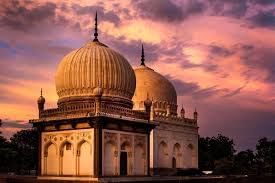
Why in news?
After a decade-long restoration effort by the Telangana Government’s Department of Heritage and Aga Khan Trust for Culture (AKTC), the Qutb Shahi Heritage Park was opened to the public.
About Qutb Shahi tomb complex:
- The Qutb Shahi tomb complex was established by the Qutb Shahi dynasty, which ruled from 1518 A.D. to 1687 A.D.
- It is situated in Ibrahim Bagh, Hyderabad.
- This complex features 30 tombs, mosques, and a mortuary bath.
- The tombs are the final resting places of the rulers from the Qutb Shahi Dynasty.
- It encompasses a 500-year-old collection of grand mausoleums, idgah, graves, funerary mosques, a hammam (bath), and baolis (stepwells).
- Architecture style:
- The site is an exceptional example of an Indo-Muslim dynastic necropolis.
- The tombs are arranged in a significant group on a raised platform.
- They exhibit a blend of Persian, Pathan, and Hindu architectural influences, utilizing grey granite.
- The structures are adorned with intricate stucco ornamentation, making it a unique site where an entire dynasty is interred in one location.
- The tombs are set within beautifully landscaped gardens featuring detailed stone carvings.
- Key facts about the Qutb Shahi dynasty:
- The dynasty governed the kingdom of Golconda, located in the southeastern Deccan region.
- It was one of five successor states that emerged from the Bahmani kingdom.
- The founder of the dynasty was Quli Qutb Shah, a Turkish governor of the Bahmani territory.
- The dynasty's rule lasted from 1518 to 1687.
- Quli Qutb Shah declared independence in 1518, establishing Golconda as his capital.
- Later, Muhammad Quli Qutb Shah founded a new capital in Hyderabad towards the end of the 16th century.
- The kingdom extended from the Godavari River in the north, bordered by Tamil Nadu to the south, Bijapur to the west, and the Bay of Bengal to the east.
GS3/Health
What is Leptospirosis?
Source: DTE

Why in News?
A severe Leptospirosis outbreak has emerged as a major public health concern across Kerala.
About Leptospirosis:
- Leptospirosis, commonly referred to as "rat fever," is a rare bacterial infection that can affect both humans and animals.
- The disease is caused by a bacterium known as Leptospira interrogans.
- This infection is predominantly found in tropical regions and areas with warmer climates that experience high levels of rainfall annually.
- Transmission occurs through carriers that can be either wild or domesticated animals, such as rodents, cattle, pigs, and dogs.
- Infected animals excrete the bacteria through their urine, which can contaminate the environment.
- The bacteria can persist in contaminated water or soil for weeks to months.
- Human-to-human transmission is extremely rare, occurring only in exceptional cases.
Symptoms:
- After exposure to the bacteria, symptoms may manifest within 2 to 30 days.
- Leptospirosis can present itself in two phases:
- In the initial phase, individuals may experience fever, chills, headaches, muscle aches, vomiting, and diarrhea.
- Patients might feel a temporary improvement, only to become ill again later.
- Some individuals may progress to a more severe second phase, which can lead to kidney or liver failure, or inflammation of the membranes surrounding the brain and spinal cord (meningitis).
Treatment:
- Leptospirosis is treatable with antibiotics, such as penicillin and doxycycline.
GS2/Polity
Rajya Sabha Elections
Source: The Hindu
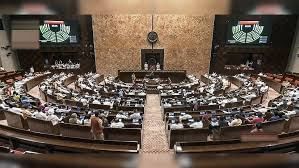
Why in news?
The results of the latest round of Rajya Sabha elections have been announced.
Elections to the Rajya Sabha:
Election Method
- Members are indirectly elected by the elected representatives of the State Legislative Assemblies and the electoral college for Union Territories (Delhi and Puducherry).
- The election employs the proportional representation system through the Single Transferable Vote (STV) method and utilizes an Open Ballot.
Composition
- Total Members: The Rajya Sabha can have up to 250 members, consisting of 238 elected members and 12 nominated by the President in recognition of their contributions to art, literature, science, and social service.
- Current Strength: As of now, there are 245 members (233 elected and 12 nominated).
Voting Requirements for Candidates
- Candidates must be endorsed by at least 10 members of the State Assembly or 10% of the party’s strength in the Assembly to be eligible for nomination.
Voting Process
- Single Transferable Vote: Voters rank candidates according to their preferences. If a preferred candidate is eliminated or meets the required quota, votes can be transferred to another candidate.
- Open Ballot System: This system is used to promote transparency during the voting process.
Election Procedure
- Quota System: To be declared a winner, a candidate must secure a quota of votes calculated as [Total Votes / (Number of Vacancies + 1)] + 1.
Powers and Functions
- Legislative Powers: The Rajya Sabha can introduce and pass bills, except for Money Bills.
- Special Powers: It has the authority to pass resolutions for creating all-India services, legislate on subjects in the state list under specific conditions, and approve emergency proclamations.
Sessions
- The Rajya Sabha meets for three regular sessions each year: the Budget session, Monsoon session, and Winter session. Special sessions can be convened as necessary.
Tenure
- The Rajya Sabha is a permanent body that is not subject to dissolution; one-third of its members retire every two years.
Chairmanship
- The Vice President of India serves as the ex-officio Chairman of the Rajya Sabha, while a Deputy Chairman is elected from among the members.
Eligibility for Membership
- To be eligible for membership, individuals must be Indian citizens, at least 30 years old, and meet other constitutional requirements.
Disqualification Criteria
- Members can be disqualified for reasons such as defection, specific criminal convictions, or if they are declared bankrupt, among other grounds.
Special Features
- Nominated Members: The President can nominate 12 members to the Rajya Sabha.
- No Dissolution: Unlike the Lok Sabha, the Rajya Sabha is a continuous body and cannot be dissolved.
Key Sessions and Administrative Details
- First Sitting: The first sitting of the Rajya Sabha took place on May 13, 1952.
- Secretary General: The Secretary General acts as the chief executive officer and administrative head of the Rajya Sabha Secretariat.
PYQ:
[2013] Consider the following statements:
1. The Chairman and the Deputy Chairman of the Rajya Sabha are not members of that House.
2. While the nominated members of the two Houses of Parliament do not have voting rights in the presidential election, they are allowed to vote in the election of the Vice President.
Which of the statements given above is/are correct?
(a) 1 only
(b) 2 only
(c) Both 1 and 2
(d) Neither 1 nor 2
|
53 videos|5389 docs|1140 tests
|
FAQs on UPSC Daily Current Affairs: 29 August 2024 - Current Affairs & Hindu Analysis: Daily, Weekly & Monthly
| 1. What is the significance of the Bureau of Police Research and Development (BPR&D) in India? |  |
| 2. What are ANUBHAV Awards and why are they important? |  |
| 3. How does the Agriculture Infrastructure Fund (AIF) Scheme benefit farmers in India? |  |
| 4. What is the significance of raising the women's marriage age in Himachal Pradesh? |  |
| 5. How is India sharpening its anti-tuberculosis fight and what are the key initiatives in place? |  |
















